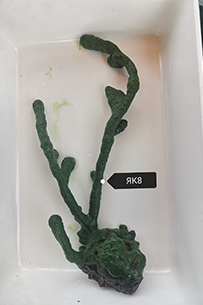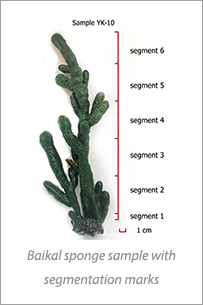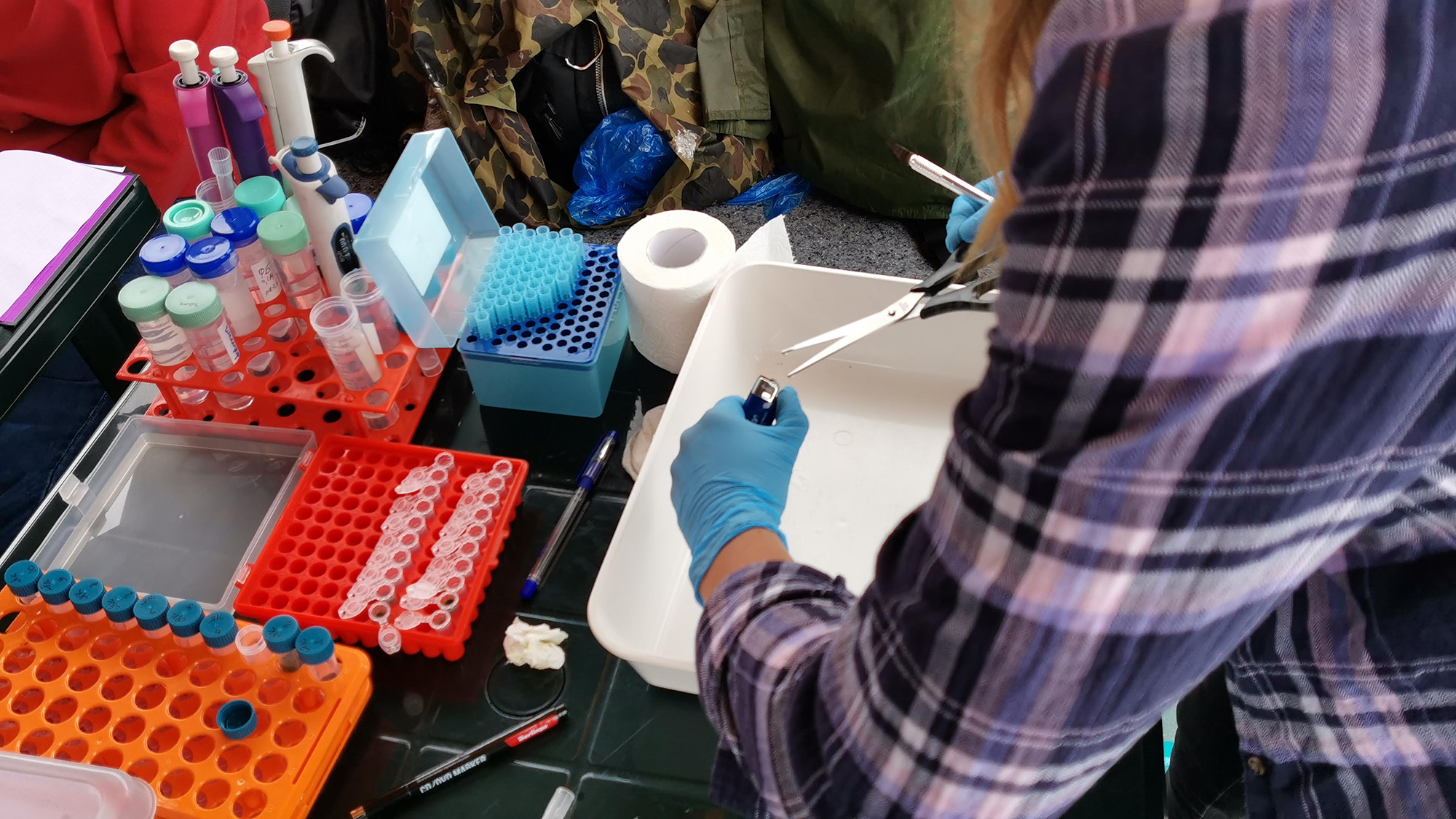Baikal sponges as bioindicators of heavy metal pollution in the lake
News, 06 September 2022
Scientists from the Joint Institute, together with specialists from the Limnological Institute of the SB RAS (LIN SB RAS, Irkutsk) and the University of Bucharest (Romania), studied the elemental composition of Baikal sponges collected from sites with different anthropogenic loads. It turned out that sponges can be successfully used as bioindicators of Lake Baikal pollution by toxic elements.
In recent years, the anthropogenic load on Lake Baikal has significantly increased, which means more and more pollutants, including heavy metals, are flowing into the water. Scientists use so-called bioindicators to assess the condition of the Baikal ecosystem. Bioindicators are organisms whose changes in the state can be used to monitor the state of the environment. In aquatic ecosystems, organisms capable of filtering water are often used as bioindicators. This peculiarity allows them to accumulate polluting agents that are present in the water, even in small quantities, and to be among the first to react to them.
 As Baikal sponges eat through filtration, they are able to accumulate pollutants. This ability is particularly evident when water is contaminated with heavy metals. In addition, in recent years Baikal has witnessed diseases of sponges, their mass death, mass emissions of spirogyra, changes in the species composition of plankton, indicating that the lake’s ecosystem is deteriorating. That is why scientists set themselves the task of studying whether Baikal endemic sponges are suitable for bioindication of heavy metal pollution in the lake or not.
As Baikal sponges eat through filtration, they are able to accumulate pollutants. This ability is particularly evident when water is contaminated with heavy metals. In addition, in recent years Baikal has witnessed diseases of sponges, their mass death, mass emissions of spirogyra, changes in the species composition of plankton, indicating that the lake’s ecosystem is deteriorating. That is why scientists set themselves the task of studying whether Baikal endemic sponges are suitable for bioindication of heavy metal pollution in the lake or not.
For this purpose, samples of water, soil, and sponges of L. baikalensis species were collected in two areas of Lake Baikal: near Listvyanka village and near Bolshie Koty village in the course of summer expeditions of the LIN SB RAS. The samples were frozen and transported to JINR for further investigations. The sponges were segmented, dried, and analysed. Scientists faced many questions. How are different elements distributed within the sponge body and are there any patterns in this distribution? How great are the differences in element concentrations in sponges collected in one area and within the species as a whole?
 Panorama of the lake Baikal water area near Listvyanka village
Panorama of the lake Baikal water area near Listvyanka village
 Lake Baikal near Bolshie Koty village
Lake Baikal near Bolshie Koty village
“We were very excited to determine the elemental composition of Baikal sponges, a completely new object for our research sector,” Inga Zinicovscaia, Head of the Sector of Neutron Activation Analysis and Applied Research of FLNP JINR, said. “We used neutron activation analysis and inductively coupled plasma atomic emission spectrometry to study them.”
 During the study, scientists found that different elements are distributed differently inside the sponge’s body. For example, the concentration of aluminium, manganese, and uranium in the segment of the sponge closest to the substrate turned out to be significantly higher than in other segments, whereas no such trend was observed for copper and lead. “Studying this issue is very important.If sponges are to be used as bioindicators, we need to know exactly which part of their organism needs to be analysed to obtain reliable and reproducible results,” Alena Yakhnenko, a member of the Sector of the Molecular Genetics of the Cell DLNP JINR and LIN SB RAS, stressed. Using segmental element analysis of the sponges, the researchers found that the gentlest and most appropriate way of sampling was to take the top part of one of the sponge branches, which would keep the organism alive and would not reduce the population.
During the study, scientists found that different elements are distributed differently inside the sponge’s body. For example, the concentration of aluminium, manganese, and uranium in the segment of the sponge closest to the substrate turned out to be significantly higher than in other segments, whereas no such trend was observed for copper and lead. “Studying this issue is very important.If sponges are to be used as bioindicators, we need to know exactly which part of their organism needs to be analysed to obtain reliable and reproducible results,” Alena Yakhnenko, a member of the Sector of the Molecular Genetics of the Cell DLNP JINR and LIN SB RAS, stressed. Using segmental element analysis of the sponges, the researchers found that the gentlest and most appropriate way of sampling was to take the top part of one of the sponge branches, which would keep the organism alive and would not reduce the population.
The comparative analysis of the elemental composition of sponges collected in two different areas showed that in Listvennichny Bay the content of Cl, Ca, V, Zn, As, Se, Ba, Cd, and Cu was significantly higher than in the area of Bolshie Koty village. For copper, cadmium, and bromine, the content of elements in the sponges far exceeded their content in the environment, suggesting bioaccumulation of chemicals in these organisms. A team of scientists succeeded in proving that the content of some toxic elements in sponges is also higher compared to the environment and that the level of accumulation is correlated with the content of such elements in the environment.
Thus, sponges can be successfully used as bioindicators of toxic element pollution of Lake Baikal. In the future, based on the data obtained in the study, scientists plan to assess the content of heavy metals in sponges from different areas of Lake Baikal, in each of the three lake basins. They will alsostudy the peculiarities of bioaccumulation of heavy metals in four more species of Baikal endemic sponges to select the most promising species. Moreover, scientists are going to assess the influence of species evolution on their ability to bioaccumulate.
As sponges have not been used as bioindicators before, the research of this team of scientists was a pilot study. The findings were published in the journal Marine Pollution Bulletin.
